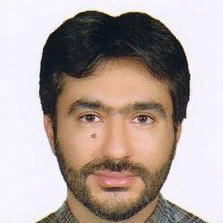
Payman Moallem
Work place: Department of Electrical Engineering, University of Isfahan, Isfahan, Iran
E-mail: p_moallem@eng.ui.ac.ir
Website:
Research Interests: Artificial Intelligence, Computer Vision, Image Processing
Biography
Payman Moallem, was born in Tehran, Iran, in 1970. He received B.Sc. and M.Sc. degrees in Electronics Engineering from Isfahan University of Technology, Isfahan, Iran, in 1992, and Amirkabir University of Technology, Tehran, Iran, in 1996, respectively. He also received Ph.D. degree in Electrical Engineering from Amirkabir University of Technology, in 2003. He is currently an Associate Professor in Electrical Engineering Department at University of Isfahan, Iran. His research interests include computer vision, digital image processing, real-time video processing, artificial intelligence, neural networks and pattern recognition. Since 2006, Dr. Moallem he has been a member of the Editorial Boards of Majlesi Journal of Electrical Engineering. He is also Associate Editor of Majlesi Journal of Multimedia Processing. He published more than 200 papers in peer-reviewed journals and conferences
Author Articles
Using Shape Information and Dark Paths for Automatic Recognition of Touching and Overlapping Chromosomes in G-Band Images
By Payman Moallem Arezoo Karimizadeh Mohammadreza Yazdchi
DOI: https://doi.org/10.5815/ijigsp.2013.05.03, Pub. Date: 28 Apr. 2013
Nowadays, Karyotype analysis is frequently used in cytogenetics. It is a time-consuming and repetitive work therefore an automatic analysis can greatly be valued. In this research, an automatic method is presented. Firstly, a proposed locally adaptive thresholding method is used to segment chromosome clusters. Then, the clusters is divided into two main categories including, single chromosomes and multi-chromosome clusters based on geometric shape of clusters. In the next step, each extracted cluster is investigated to find the dark paths in order to detect touching chromosomes. Then, overlapping chromosomes are separated in clusters based on their geometric shapes. Finally, a criterion function is used to measure the similarity between the outputs of the proposed algorithm and the single chromosomes in order to recognize separated parts. The proposed algorithm is applied on 47 G-band images. The results shows that single chromosomes and clusters are recognized by the precision of 98.5% and 86.4%, respectively and separation of touching and overlapping clusters are done by precision of 70% and 67%, respectively.
[...] Read more.Facial Image Super Resolution Using Weighted Patch Pairs
By Payman Moallem Sayed Mohammad Mostafavi Isfahani Javad Haddadnia
DOI: https://doi.org/10.5815/ijigsp.2013.03.01, Pub. Date: 8 Mar. 2013
A challenging field in image processing and computer graphics is to have higher frequency details by super resolving facial images. Unlike similar papers in this field, this paper introduces a practical face hallucinating approach with higher quality output images. The image reconstruction was based on a set of high and low resolution image pairs. Each image is divided into defined patches with overlapped regions. A patch from a defined location is removed from the low resolution (LR) input image and is compared with the LR patches of the training images with the same location. Each defined LR patch has a defined high resolution (HR) patch. Based on the Euclidean distance comparison, each patch of every single image in the training images database receives a specific weight. This weight is transferred to its relevant HR patch identically. The sum of the gained weights for one specific location of a patch is equal to unity. The HR output image is constructed by integrating the HR hallucinated patches.
[...] Read more.Other Articles
Subscribe to receive issue release notifications and newsletters from MECS Press journals